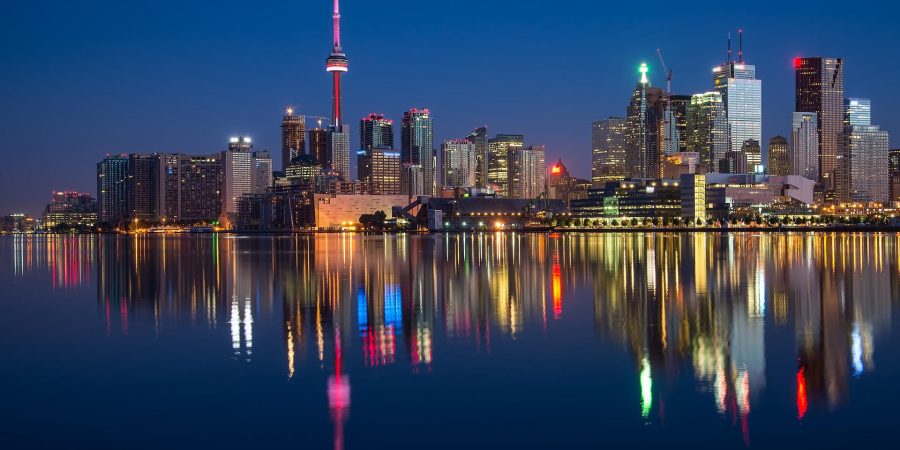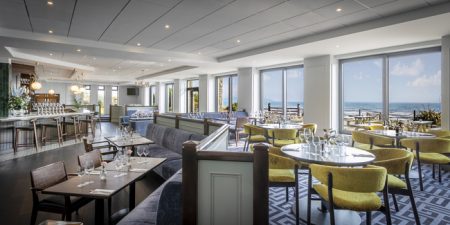Kaley Tyne Johnson is an interior designer who learned her trade at the New York School of Interior Design. Her work takes her all over the world, particularly Canada, the US and the UK, enabling her to indulge her passion for architecture and visit some of the world’s most magnificent buildings.
From the Parliament Buildings in Ottawa to Habitat 67 in Montreal, this article will explore three astounding feats of Canadian architecture.
Parliament Buildings – Ottawa
Canada’s Parliament Buildings are internationally acclaimed as masterpieces of Gothic architecture. The complex comprises three main structures: The East Block, West Block, and Centre Block.
The Centre Block was gutted by fire in 1916; the Library of Parliament was the only part of the building to survive due to its fireproof iron doors. While the East and West Blocks were untouched by the fire, the Centre Block had to be entirely rebuilt.
Jean-Omer Marchand and John A. Pearson, the architects tasked with rebuilding the Centre Block (and Peace Tower), kept its current incarnation closely in step with the building’s original style. Renovation of the Parliament Buildings was completed in 1928, and the complex remains the Canadian seat of power to this day.
Incorporating more than 600,000 items in its collection, including a statue of the young Queen Victoria, the Library of Parliament is run by more than 350 employees, serving as a research center for Canadian parliamentarians and staff today.
The Centre Block’s Peace Tower stands over 92 meters high, its carillon incorporating 53 bells, with mythical grotesques incorporated into the ornate stonework looking down on unsuspecting passersby.
Canada’s red maple leaf national flag has flown here since 1965, the complex’s Centre Block hosting the offices of the Canadian Parliament.
Fairmont Le Château Frontenac – Quebec
With tours available showcasing the castle’s exquisite interior, visitors to Fairmont Le Château Frontenac can learn all about this historic building’s past residents while being led around its lavish chambers by a guide dressed in full period costume. The luxurious brocade walls, dark wood paneling and sparkling chandeliers have all been painstakingly restored, providing a glimpse of a bygone age.
Situated in the heart of Old Quebec, a World Heritage site and North America’s only walled city, this fairytale castle recently benefited from a multimillion-dollar refurbishment. Built by the Canadian Pacific Railway, Fairmont Le Château Frontenac was inspired by the opulent châteaux of the Loire Valley. Today it is a hotel that retains much of its original character – particularly in its public rooms, such as the gleaming paneled lobby.
Habitat 67 – Montreal
Habitat 67’s unusual design concept was created through a pilot project, incorporating 354 grey-beige modules haphazardly stacked on top of each other to become an icon of 1960s utopianism.
The complex reflects the Canadian architect Moshe Safdie’s desire to reinvent apartment living. This wildly ambitious, government-sponsored creation was built for Montreal’s World Fair in 1967. More than 50 million visitors flocked to the city for the event, establishing an Expo world record that still stands today – an impressive feat for a country with a population of just 20 million. Habitat 67 is one of just two of the 90 pavilions constructed for the event that are still standing today.
This jumble of prefabricated concrete cubes has drawn comparisons to everything from the native American pueblo to Cubist paintings. Echoing Metabolism, a little-known post-war Japanese architectural movement, the buildings were created to serve as an interconnected web of prefabricated cells.
Safdie saw Habitat 67 as an antidote to the high-rises and unsustainable suburban sprawl he surveyed while travelling across North America, creating the complex as part of his mission to “reinvent the apartment building.” In a 2014 TED Talk, Moshe Safdie explained that the goal of Habitat 67 was to give the qualities of a house to each unit, explaining that it was all about gardens and contact with nature.
Described by Canada’s The Walrus magazine as a “failed dream”, the building’s modern utopian architecture soon fell out of favor. The 1970s economic downturn meant that money for these types of projects started to dry up. Due to its design, the building needed frequent repair, with some of the units becoming dilapidated.
Habitat 67 has had a change in fortunes since. In 2009, it was granted heritage status by the Quebec government. In recent years, the complex has undergone something of a renaissance, transformed by luxurious renovations. Today, its interconnected residences sprawl across multiple terraces, offering captivating views.









